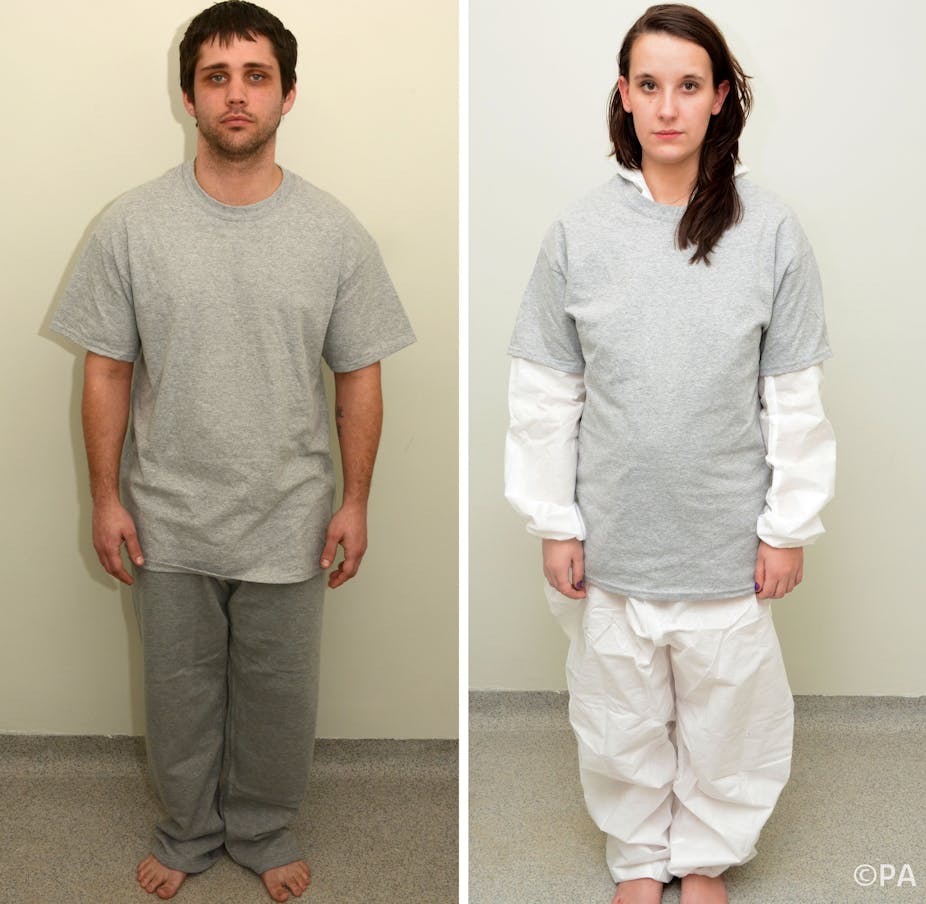Co-offending couples have featured heavily in the news recently, with the cases of Nathan Matthews and Shauna Hoare, found guilty of killing Becky Watts; and Grant Francis and Hayley Morgan, convicted of sexual offences against children.
These co-offending relationships are not a new phenomenon – some of the most infamous and heinous criminal cases in UK legal history have involved co-offending couples – for example, serial killers Fred and Rosemary West; and Ian Brady and Myra Hindley.
Questions often arise in such cases about the nature of the relationship between the offenders and whether it has influenced either of the individuals’ criminal behaviour – in particular, whether the male has coerced their female partner into being involved in the crime. The perception, after all, is often that women tend not to commit particularly violent crimes, such as murder or sexual offences – especially not alone.
This perception, however, is plain wrong. Women do commit such offences – and as sole defendants, too.
Joanne Dennehy, for example, was sentenced to life in prison in 2014 for murdering three men. And statistics tell us that between 2003 and 2014 492 women were convicted of a homicide offence in the UK. Although some of these offences will have been convicted with a co-offender, many were committed alone.
Imbalance of power
In cases involving co-offending couples, the relationship often is presented – especially by the media – as involving an imbalance of power, with the male defendant initiating and leading the offending and thus dominating his female partner. But this is not always the case. Marie Black, for example, was jailed for life earlier this year for being at the centre of – and instrumental in running – a paedophile ring involving both male and female co-defendants.
However, in those cases where the female co-defendant is particularly vulnerable and is dominated by their male co-offending partner, it must be considered that the relationship may have influenced their offending behaviour. But we must be careful not to completely deny the agency of these women. Their choice to participate in the offences with their male partner must be recognised. To simply deny their agency because of the involvement of a potentially dominant male co-offender reinforces damaging gender stereotypes surrounding both masculinity and femininity, gender stereotypes that construct men as powerful, dominant, confident and aggressive, and women as passive, weak, easily led and non-violent.
Abuse and control
Take the example of Shauna Hoare who was convicted of the manslaughter of Becky Watts alongside her co-defendent Nathan Matthews, who was convicted of murder. Hoare provided evidence of Nathan Matthews’ abusive and coercive behaviour. In sentencing Hoare, the judge explicitly acknowledged this, noting that Matthews had exercised significant control over her life, threatening and being violent towards her.

He would only let her smoke if she paid him for smoking. He called her fat. He used violence against her on a number of occasions, pulling her hair, shoving her into a wall, and on one occasion strangling her … he refused to allow the heating to be put on because of the cost
The judge also noted that Matthews was dominant in their relationship, “persuading” Hoare to participate in his fixation of “having sex with petite teenage girls”. He also explicitly made reference to the influence of the relationship on Hoare’s involvement in Becky’s death, noting:
Shauna Hoare was a person of previous good character. Her involvement in these offences was very much a product of the nature of the relationship with Nathan Matthews
Thus the complexities and intricacies of being involved in such an abusive and coercive relationship must be considered when exploring Hoare’s involvement in Becky Watts’ death. Simultaneously, however, Hoare’s part in the crime cannot automatically be denied, but rather should be acknowledged within the context of the toxic and abusive relationship she had with Matthews.
When exploring co-offending relationships, it is too simplistic to view female co-defendants as either “victims” or “evil” and lacking agency. Rather it is important to consider the co-offending relationship and its complex power dynamics, intricacies and nuances, which are often amplified when compared to many intimate relationship. This would allow for the agency of the participants to be acknowledged, while simultaneously allowing for the choices, particularly of female co-defendants, to be contextualised.

